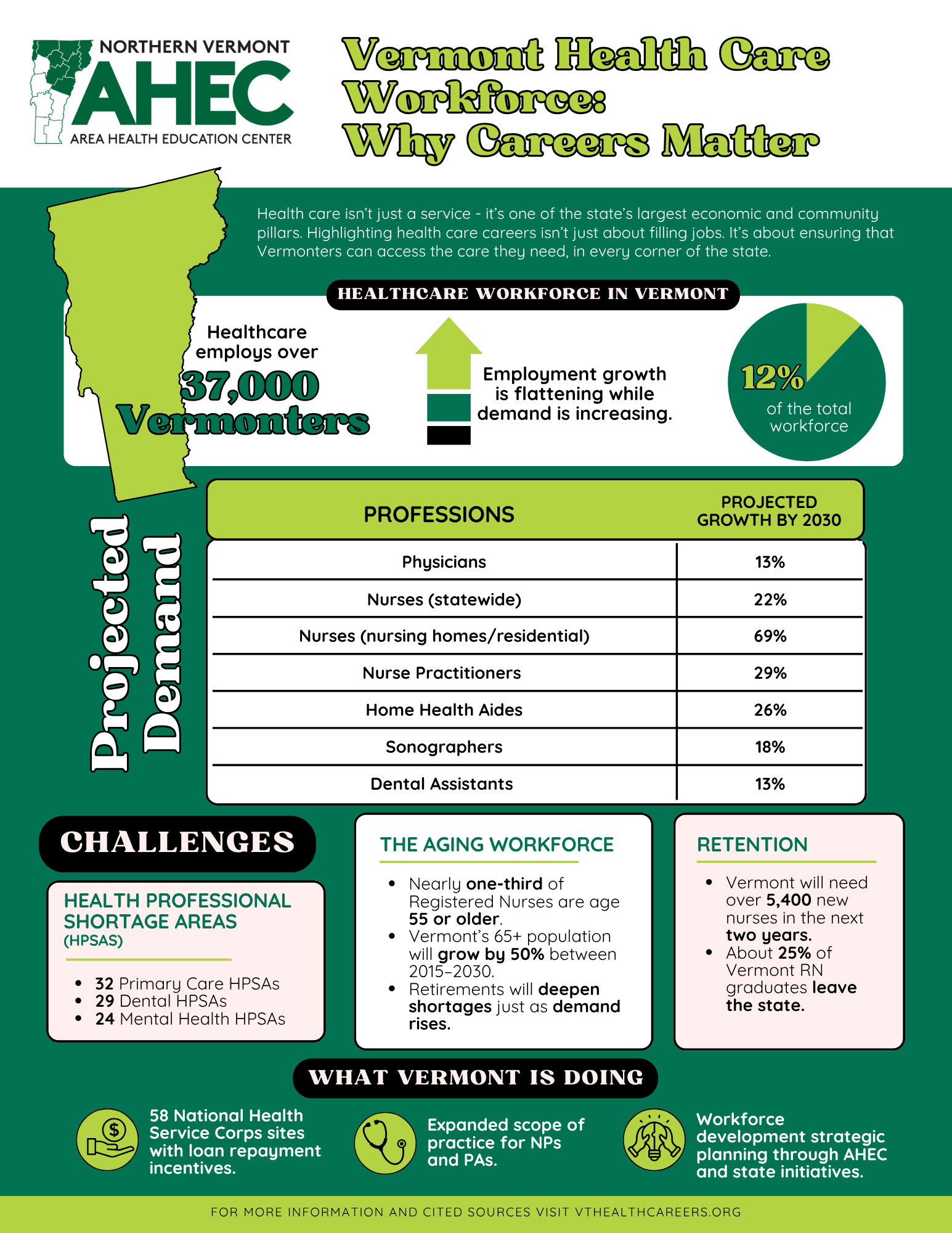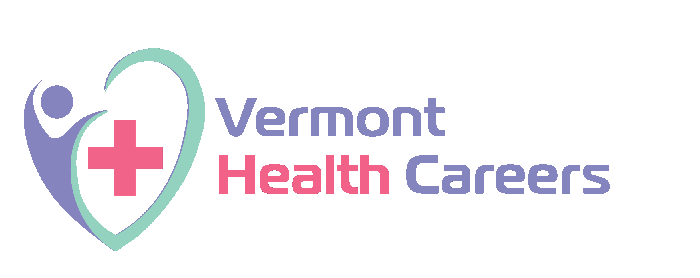And yet, this vital workforce is under strain.
An Aging Workforce Meets Rising Demand
Nearly one – third of Vermont’s registered nurses are age 55 or older. As these professionals approach retirement, the system faces a potential wave of vacancies – just as demand for care is accelerating. By 2030, Vermont’s population over age 65 will have grown by 50%, far outpacing the state’s overall population, which is projected to decline slightly.
This means fewer working – age adults, more people needing care, and a workforce pipeline struggling to keep up.
- Demand for physicians is projected to rise 13% by 2030.
- Demand for nurses will increase 22% statewide, and in long – term care facilities the need is expected to spike 69%.
- Vermont will need over 5,400 new nurses in the next two years, but about 25% of RN graduates leave the state after finishing their programs.
The math is simple: more patients, fewer providers.
A Clear Picture of Urgency
The story becomes even sharper when we visualize it:
- Employment Growth Flattening: Vermont’s health workforce has hovered around 37,000 workers for years, with little growth despite soaring need.
- Projected Openings: Job openings for nurses are projected to rise steeply, with 2025 showing even more demand than 2024.
- Retention Challenge: A quarter of newly trained Vermont nurses leave the state, deepening the shortage.
This is not just a workforce problem – it’s a community health problem. Shortages limit access to care, especially in rural areas, where patients already travel long distances for basic services.
Vermont’s Shortages by the Numbers
The federal government designates Health Professional Shortage Areas (HPSAs) to identify where access is most limited. Vermont currently has:
- 32 Primary Care HPSAs
- 29 Dental Health HPSAs
- 24 Mental Health HPSAs
These numbers underscore how shortages span across all types of care – not just hospitals but dentists, mental health providers, and family practices.
What Vermont Is Doing
The state is not standing still. Efforts are underway to attract, train, and retain health care workers:
- Loan Repayment & Service Incentives: Vermont hosts 58 National Health Service Corps (NHSC) sites, where providers can serve in exchange for loan repayment.
- Expanded Scope of Practice: Nurse Practitioners are recognized as full primary care providers, able to independently prescribe, while Physician Assistants can practice under flexible delegation agreements. These policies allow more providers to meet patient needs.
- Strategic Workforce Planning: Vermont’s Health Care Workforce Development Strategic Plan and initiatives through AHEC (Area Health Education Centers) are connecting students, career changers, and professionals with training and job pathways.
Vast Career Pathways Await
When we talk about health care, it’s easy to think first of doctors and nurses – but the opportunities are far broader:
- Nurse Practitioners: projected growth +29%
- Home Health & Personal Care Aides: projected growth +26%
- Diagnostic Medical Sonographers: projected growth +18%
- Dental Assistants: projected growth +13%
These careers span advanced practice roles, essential support positions, and technical specialties – meaning there is a place for nearly every interest and skillset in health care.
Why October Matters
That’s why October as Vermont Health Careers Awareness Month is so important. It’s not just about celebrating the workforce we have – it’s about building the one we need. By highlighting career options, hands – on training opportunities, and the direct impact these roles have on community well – being, we can:
- Inspire students to explore health professions.
- Encourage mid – career Vermonters to consider health care as a second career.
- Strengthen retention by showing that these are not just jobs, but vital community roles.
Promoting health care careers isn’t just about filling open positions. It’s about ensuring Vermonters – today and tomorrow – can access the care they need, in every corner of the state.


